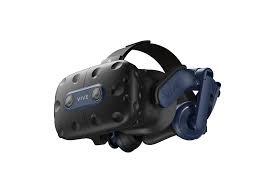Virtual reality headset with haptic feedback

Virtual reality (VR) has come a long way since its inception, and it has been hailed as one of the most transformative technologies of our time. VR immerses users in a virtual world and allows them to interact with it in a way that was previously impossible. However, one area where VR has struggled to fully deliver on its promise is in the realm of haptic feedback.
Haptic feedback refers to the sensation of touch that is provided to the user through a device. This could be anything from the vibration of a smartphone to the force feedback of a gaming controller. In VR, haptic feedback is essential for creating a more immersive experience. Imagine playing a VR game where you can see and hear everything, but you can't feel anything. It would be a far less engaging experience.
Thankfully, advances in technology have made it possible to create VR headsets with haptic feedback. These devices use a combination of sensors and actuators to simulate the sensation of touch on different parts of the user's head and face. For example, a VR headset with haptic feedback might be able to simulate the feeling of wind blowing in your face or the sensation of a punch to the head during a virtual boxing match.
One of the most exciting applications of VR with haptic feedback is in the field of medicine. Researchers are exploring the use of VR to help patients with chronic pain or those recovering from surgery. By simulating the sensation of touch, VR with haptic feedback can help distract patients from their pain or provide a more immersive experience during physical therapy.
Another area where VR with haptic feedback could have a significant impact is in the realm of gaming. Imagine playing a first-person shooter where you can feel the recoil of the gun or the impact of a grenade explosion. Or racing games where you can feel the rumble of the engine and the vibration of the road. These sensations would take gaming to a whole new level of immersion.
There are already a few VR headsets on the market that incorporate haptic feedback, such as the Oculus Quest 2 and the HTC Vive Pro. These devices use a combination of vibrating motors and pressure sensors to provide haptic feedback to the user. However, there is still room for improvement in terms of the level of detail and realism that can be achieved.

In conclusion, virtual reality with haptic feedback has the potential to revolutionize many different industries, from gaming to medicine. As technology continues to advance, we can expect to see even more sophisticated devices that can provide an even more immersive experience. Whether you're a gamer, a medical professional, or just someone looking for a new way to experience virtual reality, the future of VR with haptic feedback is exciting and full of possibilities.
